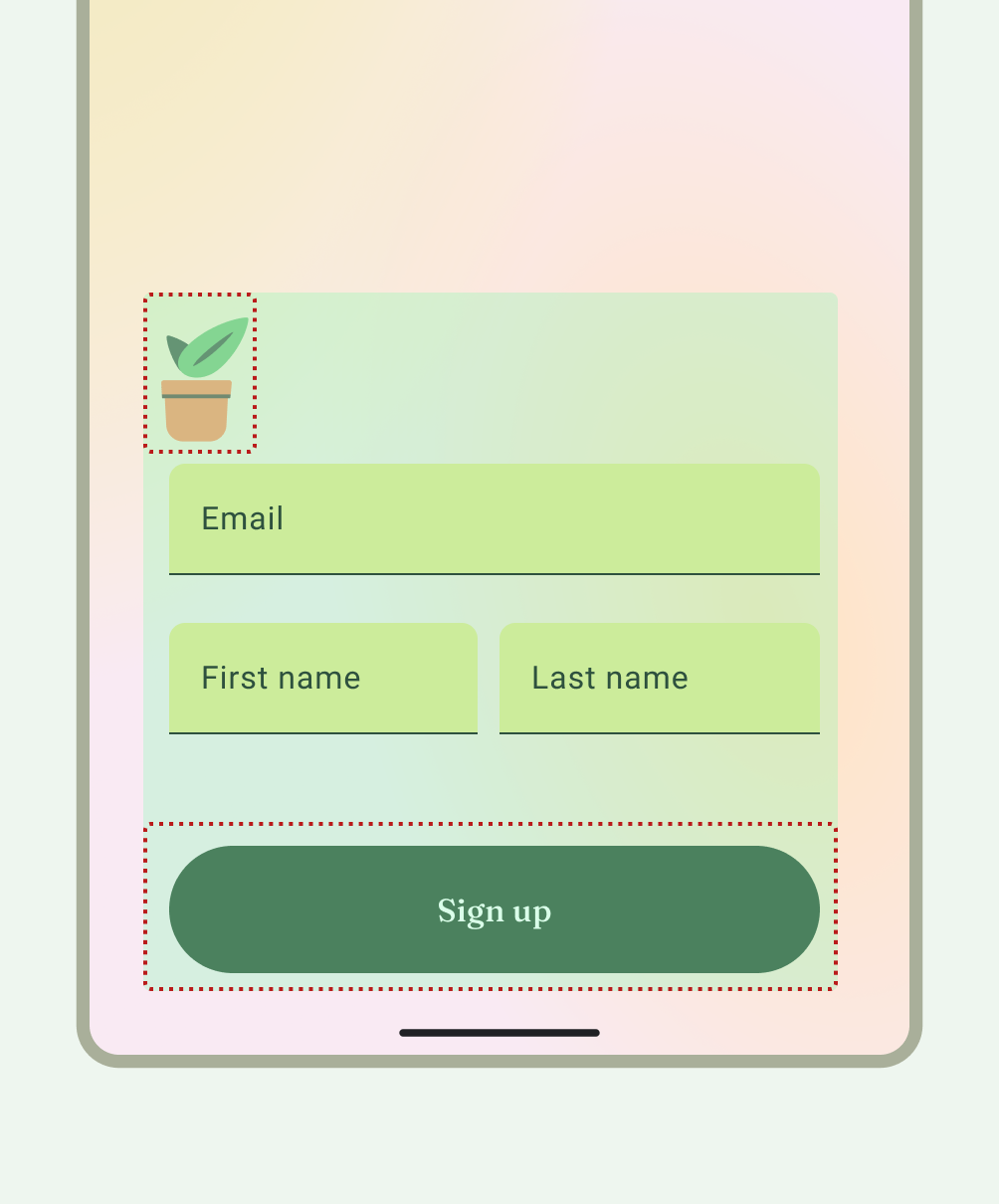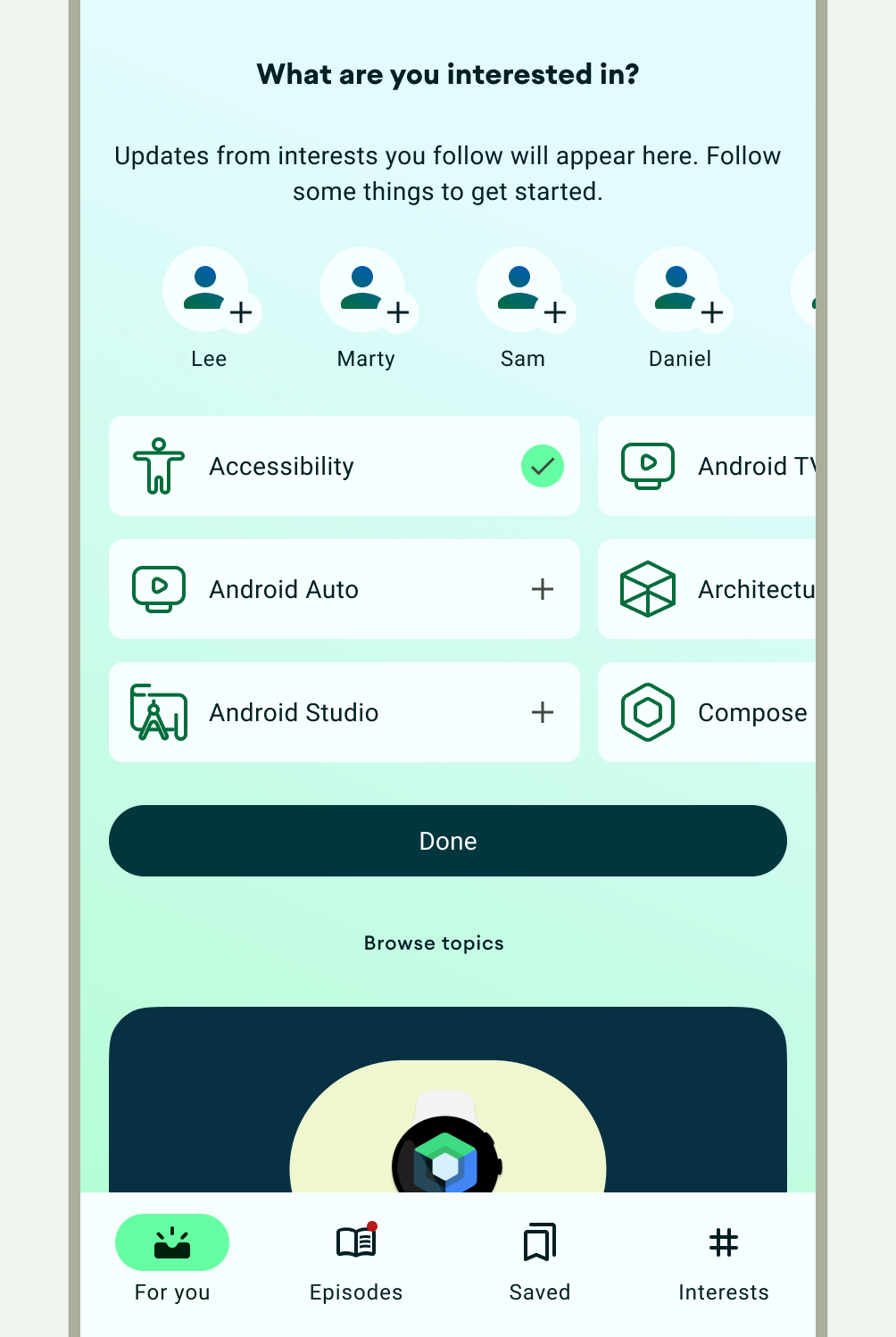יכול להיות שהקלט, התוכן או פעולות אחרות יוצגו ביחס אחד לשני או בתוך מאגר אב. אפשר להתאים אישית את הפריסות, אבל חשוב להקפיד על קיבוץ, עמודות וריווח עקביים.
אימות הוא פריסה יחסית נפוצה, כפי שמוצג באיור הבא. כאשר פריסה בהתאמה אישית מתוארת לפי מיקום רכיבי ממשק המשתמש ביחס זה לזה.

פריסות יכולות לכלול גם שילוב של סוגי פריסות. לדוגמה, אפשר לשלב קרוסלה או גלילה אופקית עם כרטיסים אנכיים. אפשר גם להציג תרשים מותאם אישית עם נתונים של רשימה אנכית.

אתם יכולים להציג תוכן בשורות או בעמודות שניתנות לגלילה באמצעות lazy rows ו-lazy columns.
פריסת מסך מלא היא פריסה נפוצה נוספת, כמו זו שמשמשת במצב המרה.

אם אתם עובדים עם תצוגות במקום עם רכיב Compose, אתם יכולים להשתמש ב-ConstraintLayout כדי להגדיר את התצוגות בהתאם ליחסים בין תצוגות אחיות לבין פריסת האב, וכך ליצור פריסות גדולות ומורכבות.
ConstraintLayout מאפשרת לכם ליצור פריסה שלמה באמצעות גרירה ושחרור במקום לערוך את ה-XML באמצעות כלי העריכה של הפריסה. מידע נוסף על בניית ממשק משתמש באמצעות הכלי לעריכת פריסות
מידע נוסף על פריסת Compose ועל הרכיבים שמרכיבים אותה.
רכיבי WebView
WebView הוא תצוגה שמציגה דפי אינטרנט בתוך האפליקציה. ברוב המקרים, מומלץ להשתמש בדפדפן אינטרנט רגיל, כמו Chrome, כדי להציג תוכן למשתמש. מידע נוסף על דפדפני אינטרנט מופיע במדריך בנושא הפעלת דפדפן באמצעות intent.

